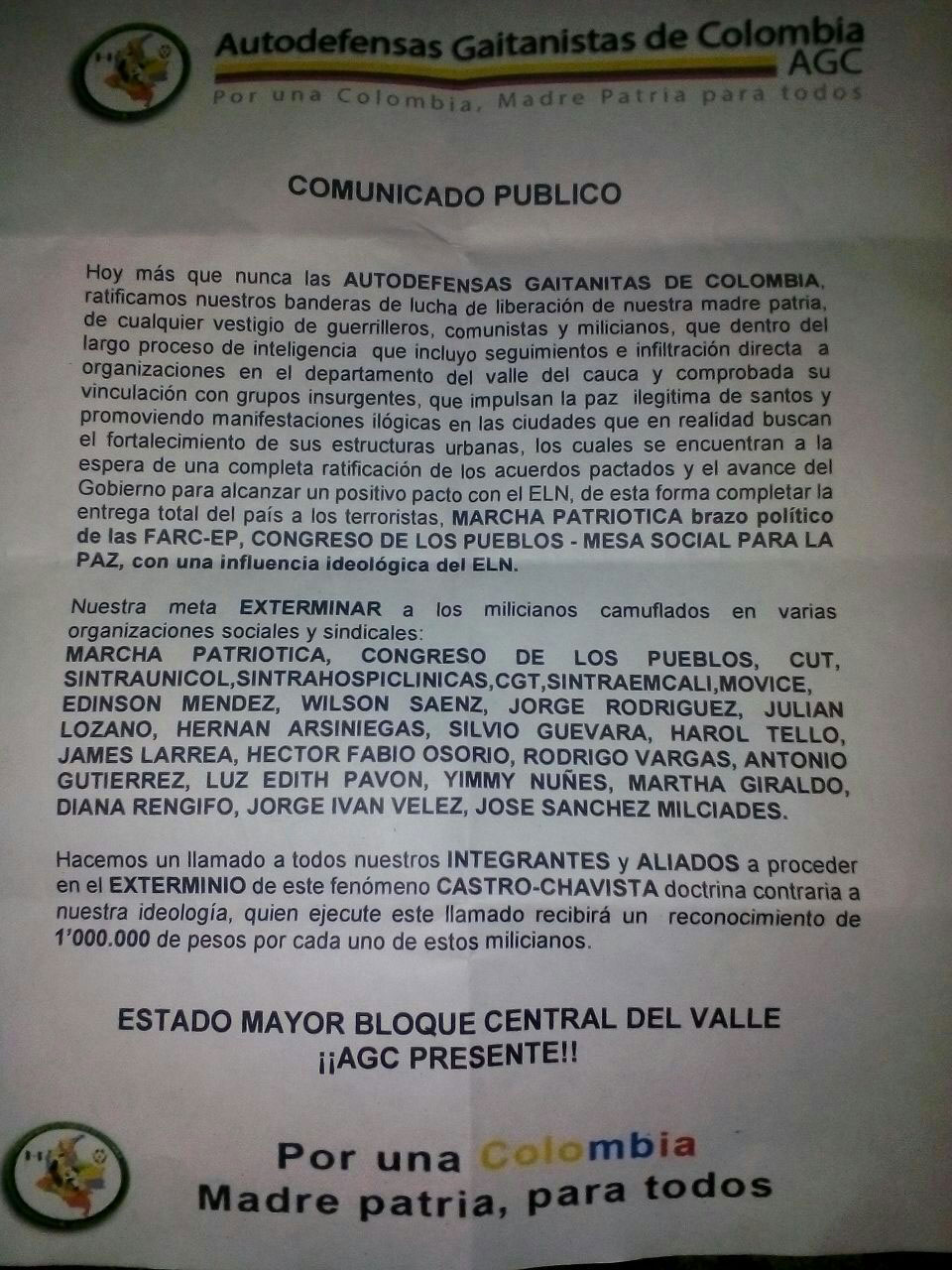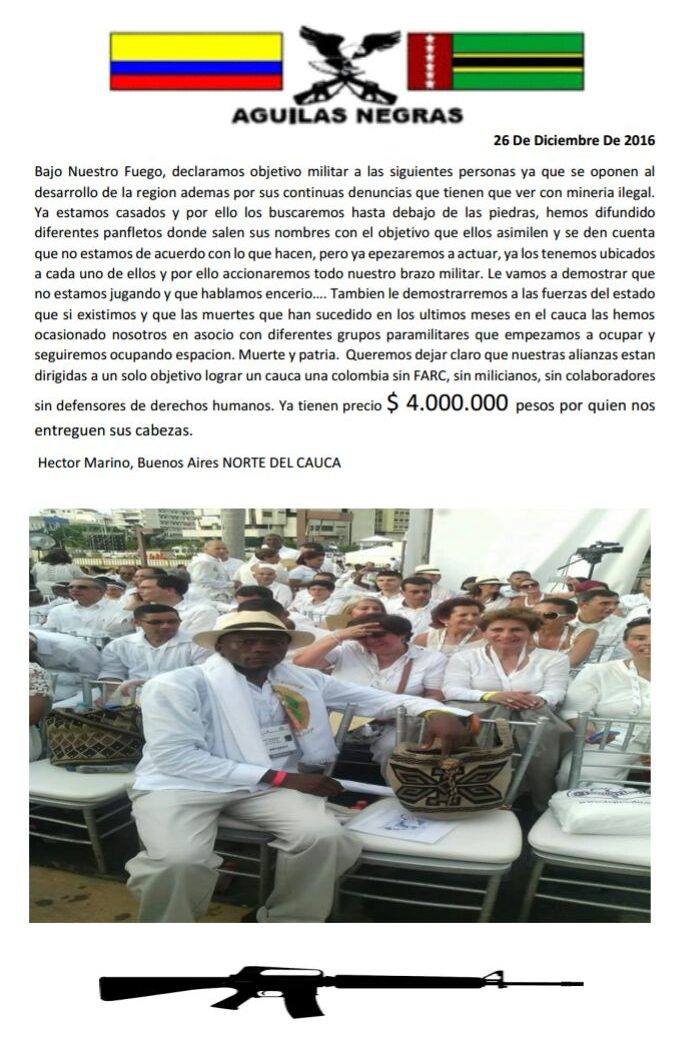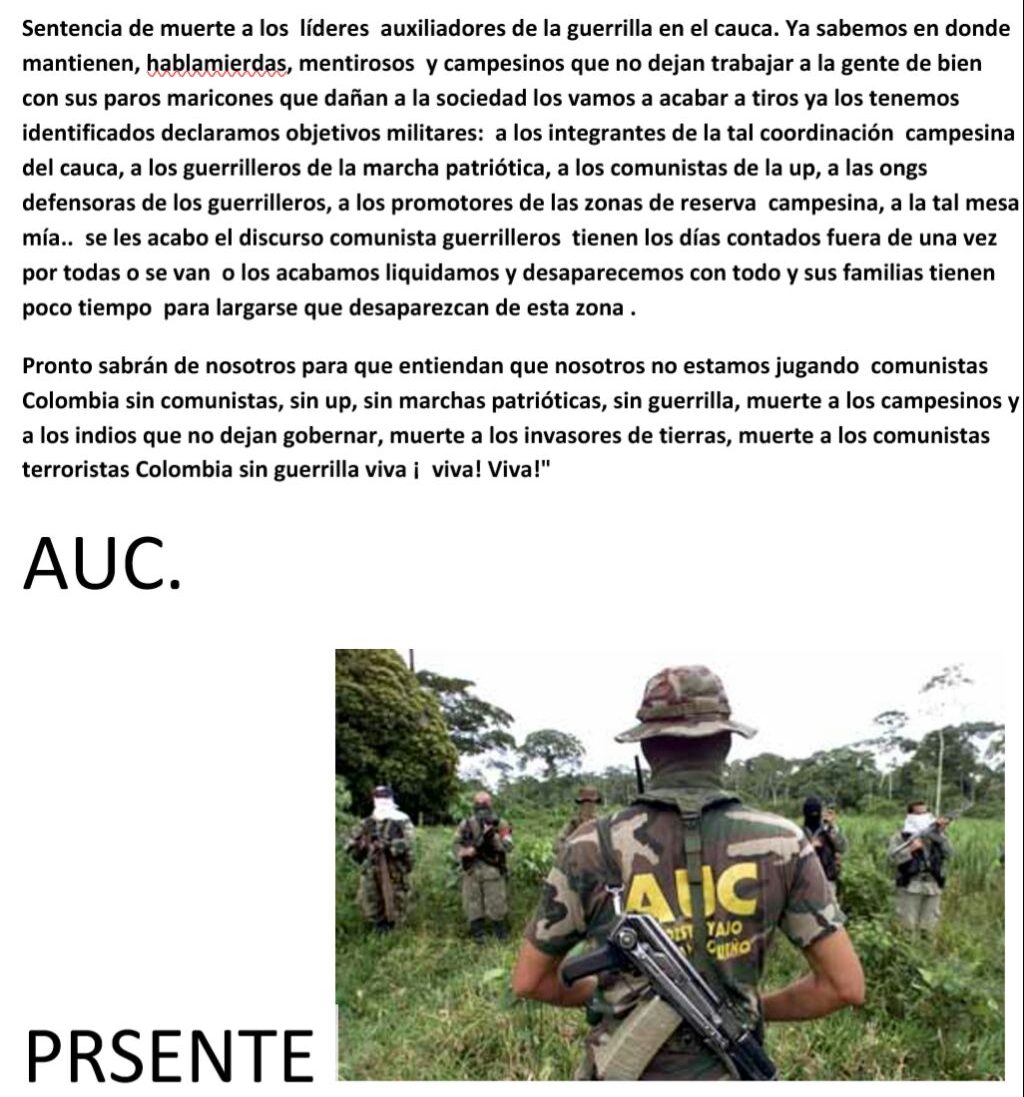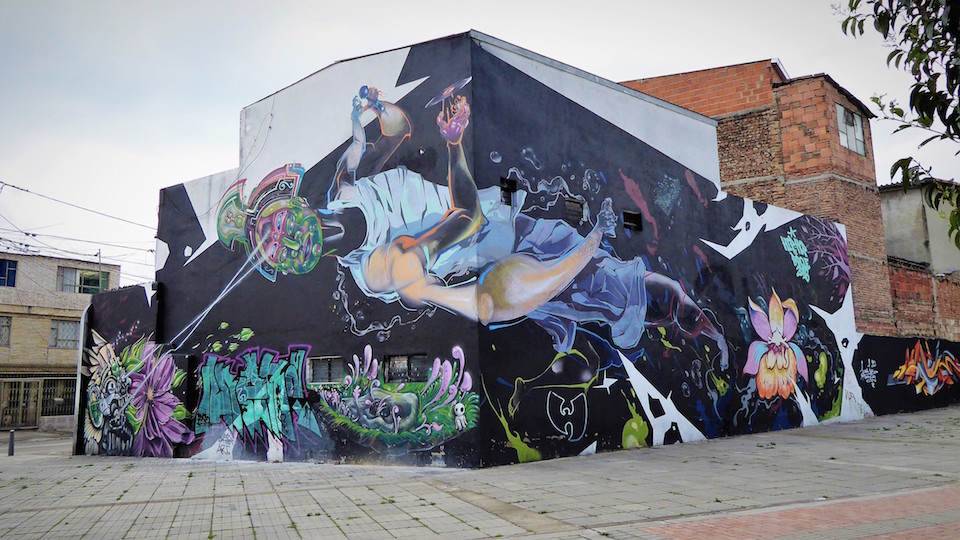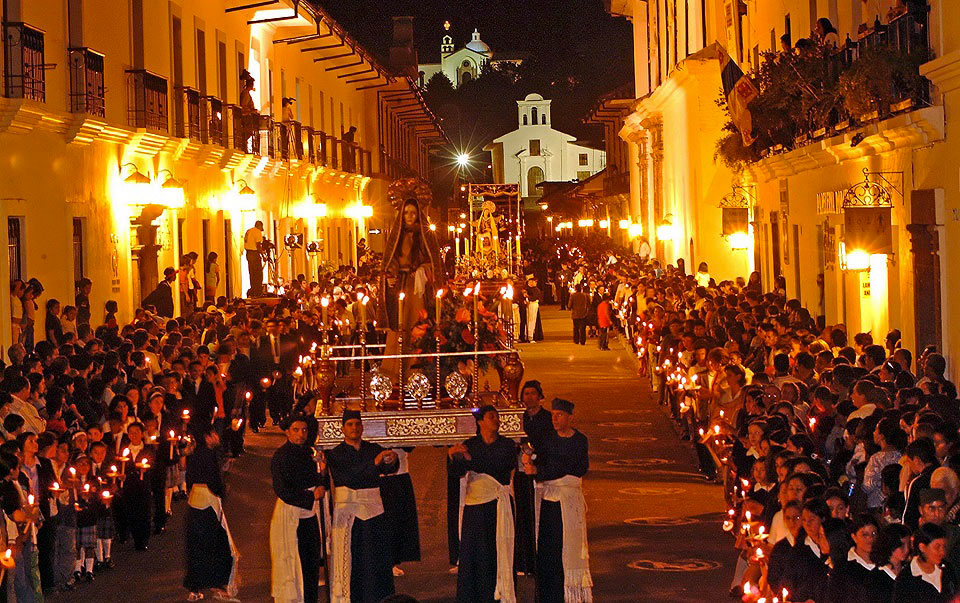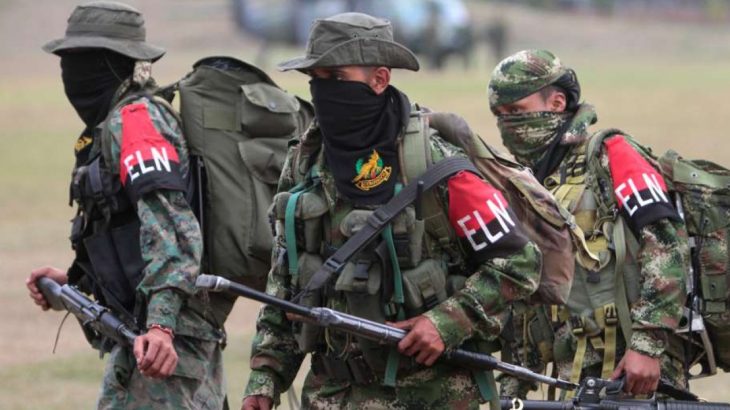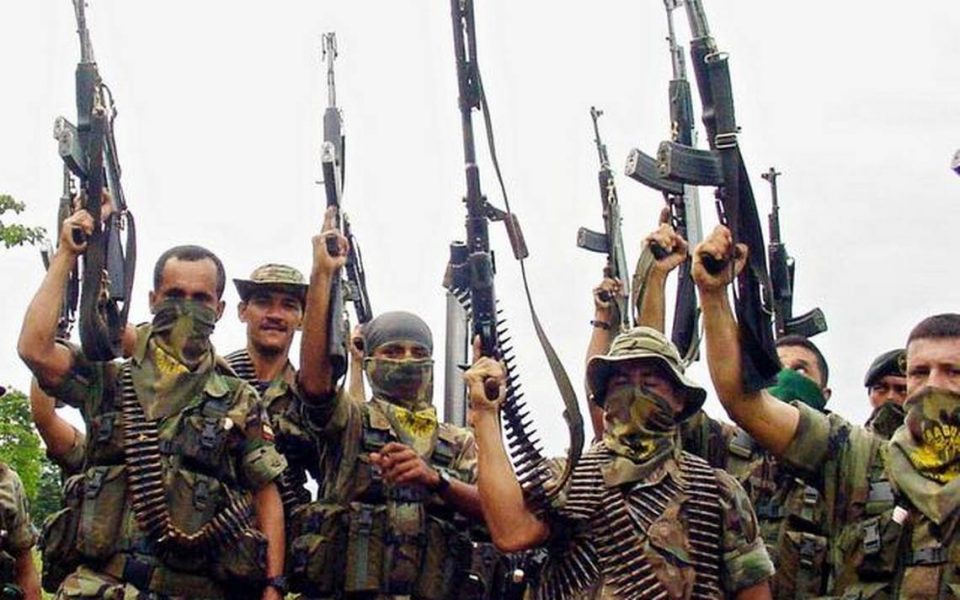
The increase in paramilitary activity in Colombia is being blamed for the sudden increase in deaths of social leaders.
Human rights organisations sound the alarm over a spike in attacks and activist deaths as armed gangs capitalise on opportunities provided by rural turmoil.
At 9.30am on Christmas Day, campesino leader Anuar José Álvarez was gunned down by two armed men on a motorcycle in rural Antioquia, according to the human rights network Francisco Isaías Cifuentes.
The killing was the last of the reported activist deaths in 2016, a year that some fear will have seen the highest number of this type of killings in six years. It is an unfortunate title for the year in which Colombia reached its historic peace agreement with the FARC, and one that commentators hope is not representative of a bigger storm brewing.
Many international and national human rights organisations are sounding alarm bells about a surge in violence against activists.
Erika Guevara-Rosas, Americas director at Amnesty International, puts the violence in context as she explains that the conflict with the FARC has not been directly linked to much of the horror that activists have endured. “Those working away from the spotlight, defending rights or protecting natural resources and territories from powerful economic interests continue to face harassment and deadly attacks. So the peace agreement in itself may do little to keep these activists safe. What they need is effective action to ensure those behind such attacks face proper justice.”
The murders are being carried out by masked men from different gangs and organisations, and for different reasons.
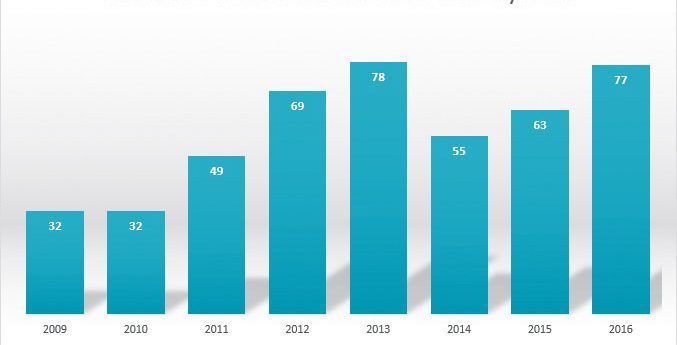
Assassinations of social leaders between 2009 and 2016. Source: Somos Defensores
Estimates vary as to the number killed because investigations into the individual incidents have not been completed. The government puts the figure at 57 murders between January and November, while the indigenous and campesino group Cumbre Agraria documents 94 homicides, 46 attacks and 302 threats. Somos Defensores, who are dedicated to protecting human rights in the country, count 72 murders.
While the numbers differ, nobody is denying that there has been an upswing in such killings – nor that each statistic reflects a story of loss and misery left in the wake of the violence.
The assassinations are all the more concerning in the context of the massacres that took place during the 1980s when the left wing Unión Patriótica party was completely decimated as an estimated 500 members from its ranks were killed by paramilitaries. The fear of a repeat of that episode is one of the reasons that the peace agreement contains specific measures to guarantee the safety of security organisations and to tackle the paramilitaries.
One such measure is the Comisión Nacional de Garantías de Seguridad – a security commission that is responsible for dismantling organisations responsible for homicides and massacres against human rights defenders and social or political movements, which the government set up last month.
Ministers have also been keen to give assurances that this is not a return of the blood-letting seen 30 years ago. Interior Minister Juan Fernando Cristo emphasised that these are not “systematic” attacks and blamed drug trafficking and other circumstances for some of the activist deaths.
One factor is the turf war between BACRIM (a term used to describe criminal groups and enterprises) and other armed groups who are vying for territorial control as the FARC move out. A number of analysts also argue that some people are making use of the disruption to settle scores over land use and ownership. Some blame paramilitary groups (who did not fully demobilise) for the violence, while others blame local mafias.
- A copy of the leaflet distributed by the AGC offering COP$1,000,000 reward for information leading to the “extermination” of social organisations.
- The statement distributed by the Águilas Negras offering COP$4,000,000 reward for “the head” of social leaders in Cauca.
- Declaration from the supposedly demobilised paramilitary group, the AUC, declaring death to to anyone who opposes their ideology, from farmers to NGOs.
The truth is probably a combination of all those components. In Cauca, ELN leader Javier Gaviria Muñoz, alias “Cazuelo”, has been arrested on charges of ordering the murders of 12 human rights leaders in the past year. It is said that he was trying to take advantage of the vacuum left by the FARC.
In Valle del Cauca, printed leaflets are circulating in which the Autodefensas Gaitanistas (also known as the AGC) declare their mission to exterminate leaders of the Marcha Patriótica, the Congreso de los Pueblos, and a number of named individuals, among others. The pamphlets offer a reward of COP$1 million for the killings. The AGC have a number of names, but are widely known as a gang that grew out of the demobilisation of the paramilitary group AUC.
Journalist and commentator Antonio Caballero argues on Lalineadefuego that these are the same ‘dark forces’ referred to by President Virgilio Barco 30 years ago. He points out that many members of these so-called “narco-paramilitary” groups were never tried for their crimes, and that now history is repeating itself. “The perpetrators of this new wave of crimes are probably the same ‘dark forces’ which have continued to act in the same way despite successive changes of name.”
He stressed that this government – unlike previous ones – needs to fully investigate these activist deaths if the country is to truly construct a lasting peace. And perhaps more pressingly, activists and NGOs are demanding that the government takes urgent action to protect them.
By Emily Hastings

